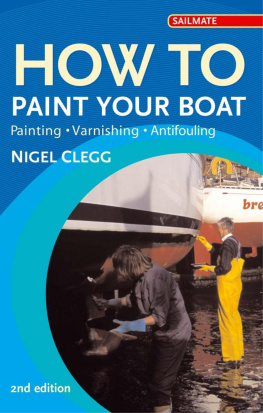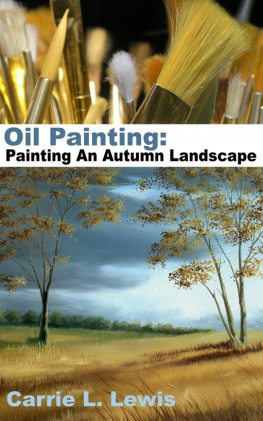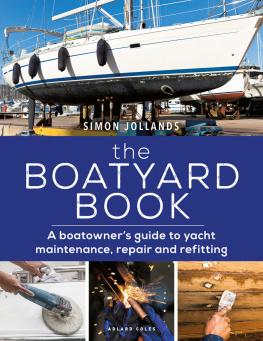

The phrase like watching paint dry is often used to describe the most boring or unremarkable events in life; but while painting may be very much an everyday occurrence, some of the processes involved are remarkably complex indeed, many are not yet fully understood.
It would be true to say that paint is only noticed when it looks outstandingly good or outstandingly bad, but at most other times it is simply taken for granted. With a little thought, though, we soon realise that paint coatings are an integral part of our modern-day life, whether they are used to coat food or drink cans, the cars that we drive, or the goods that we buy in the shops.
However, the demands made of yacht coatings are unusually severe, with the harsh marine environment posing challenges that no household or automotive paint would ever face. Moreover, yacht paints have to withstand the wear and tear of being walked on, having ropes and chains dragged across them, not to mention fender wear and occasional pilot error! These demands have led to the development of many high performance paints which, although rather technical in their application, can protect and beautify for many years.
By understanding the principles involved, painting can be a satisfying and rewarding experience. This understanding should also help to avoid expensive and time-consuming mistakes, which do little to endear us to repair and maintenance chores. This is particularly important to professionals, to whom time is money, and mistakes are expensive.
The aim of this book is to take some of the mystery out of painting, and to explain in a straightforward manner why certain practices are adopted, and why (for instance) correct film thickness, overcoating intervals, and good application conditions are so important. By explaining what is actually happening, readers can see for themselves what they are trying to achieve, and how, perhaps, they could do it better.
The all-important subject of health and safety is also addressed, with common-sense advice on how to work safely, with explanations of relevant health and safety terminology.
Finally, the book contains a useful Glossary of Painting Terms; this explains many of the painting and technical terms used. There is also a Fault Finding section, for when things go wrong.
Having answered many thousands of technical queries on the telephone and by letter, I have endeavoured to cover all of the most common yacht painting questions, while providing sufficient background information for readers to solve some of the more obscure problems themselves.
In short, the book is like a personal telephone helpline, available 24 hours a day, and never engaged!
Nigel Clegg

Before we start looking at paints in any detail, we should remind ourselves of some basic rules for safe and successful painting:
A paint scheme is only as good as its weakest coat: painting on top of badly prepared surfaces, or over an old scheme that is unsound, is a waste of both time and money.
Many marine substrates are better not painted at all than painted badly.
Always use the right material for the job: trying to cut corners by using cheaper alternatives will often result in failure, and will cost far more in the long term.
Dont try to save money by thinning the paint unnecessarily: if the manufacturers thought they could save money in that way, they would have done it themselves!
Always apply the number of coats specified by the manufacturer: reducing the number of coats will reduce both the performance and the lifespan of the coating scheme.
All organic coatings (including epoxies and polyurethanes) are slightly moisture permeable. This means that paint cannot be used to seal up rot, corrosion, or a blistering glassfibre hull.
Only use products specified for underwater use on yacht bottoms: some yacht paints will fail if applied to permanently wet areas, so check first.
Always read and follow the manufacturers instructions: they are there for a reason.
Paints are chemical compositions, and must be handled with care and respect: think about health and safety before you start work.
If in doubt, ask!
The rationale for some of these points may not be immediately obvious, but as you read through this book, their importance should become increasingly clear.
This would also be a good opportunity to introduce some of the more important terms that we shall be using: the word coating is now widely used to describe both paints and varnishes, especially where differences between the two types of material are not significant. The word paint is generally accepted to mean a pigmented or coloured coating, while a varnish is usually an unpigmented, clear coating.
The term conventional coating usually describes a single-component paint or varnish that dries by absorbing oxygen from the atmosphere, but can also include coatings that dry by solvent evaporation such as antifoulings, and some keel primers.
High performance coatings are usually chemically cured, two-component products like epoxies and polyurethanes, which provide much improved mechanical, chemical and cosmetic properties.
Once applied, each coat of paint or varnish is called a film, and a series of films is called a coating scheme. The thickness of both paint films and schemes is measured either in microns (abbreviated or M), or, less commonly now, in thousandths of an inch (usually called Mil or Thou). Unless stated otherwise, this measurement refers to the thickness of coatings when they are fully dried and cured (ie their dry film thickness or DFT), rather than their wet film thickness.
A Glossary of Painting Terms starts .

Paints are chemical compositions, and must be handled with care and respect. In particular, the following precautions should always be observed when using paint products:
Protect your eyes when mixing or using paints or solvents.
Work in well ventilated conditions. Where this is not possible, the use of suitable respiratory protection is essential.
Never work alone or in isolation when carrying out hazardous operations or working in hazardous areas; you may need help in the event of an emergency.
Protect your hands whenever mixing or using paints or solvents by wearing suitable protective gloves. A barrier cream is recommended for added protection.
Take care when opening paint tins, as the contents may be under pressure (especially polyurethane curing agents and paints containing aluminium). If a tin appears to be under pressure, cover it with a rag before opening to avoid the risk of splashing.
Never touch your mouth, eyes or other sensitive areas when wearing gloves, or without washing your hands. Always wash your hands before visiting the toilet.
Never use solvents for hand washing. Remove paint by washing with tepid water and a suitable hand cleaner from your chandler or an auto factor. A good hand cream should be applied after washing to maintain good skin condition.
Next page









